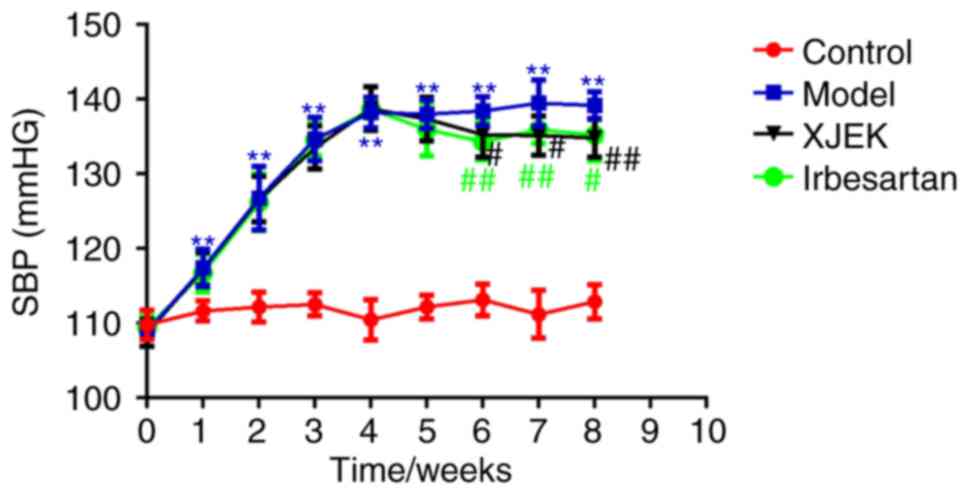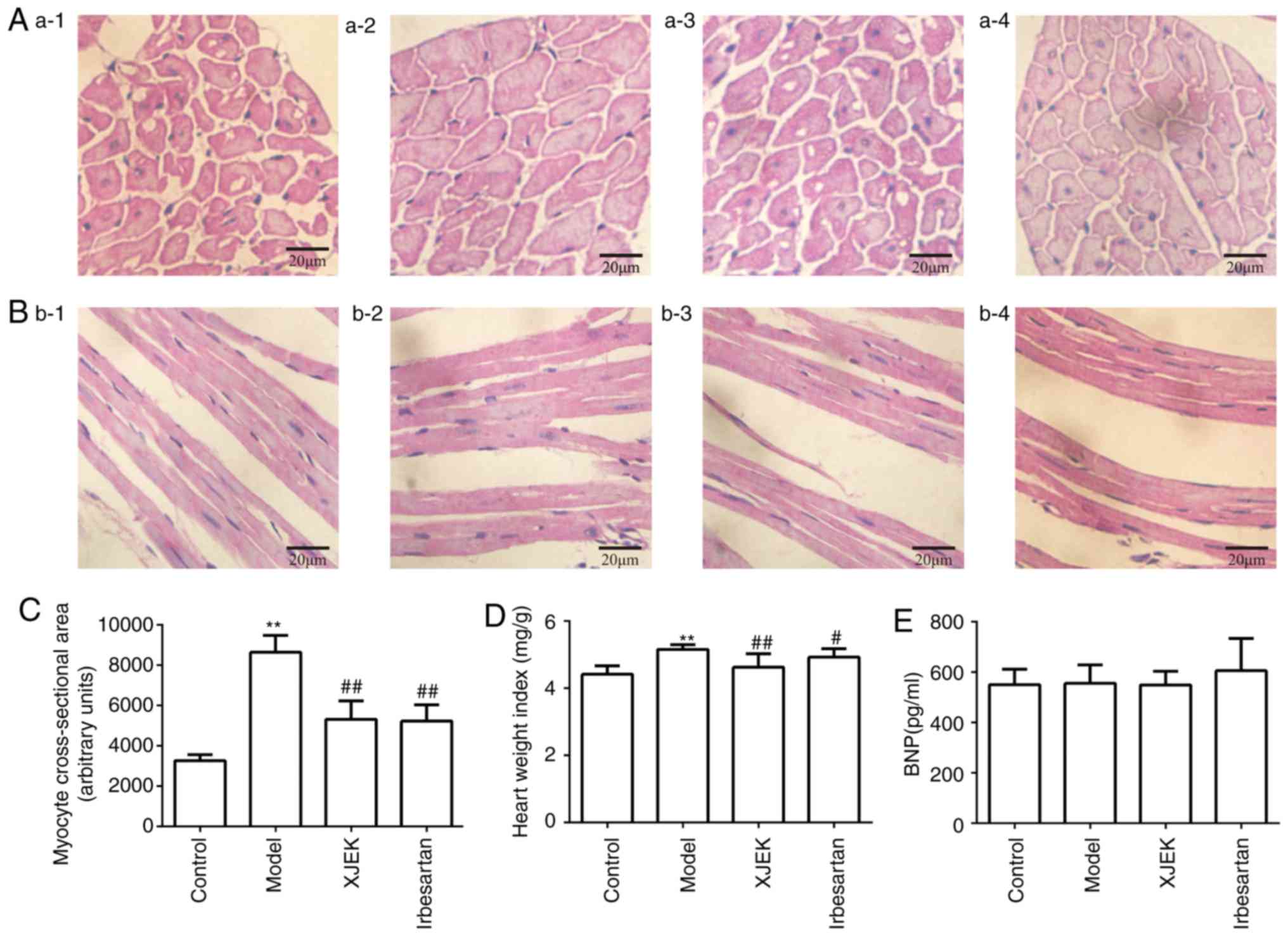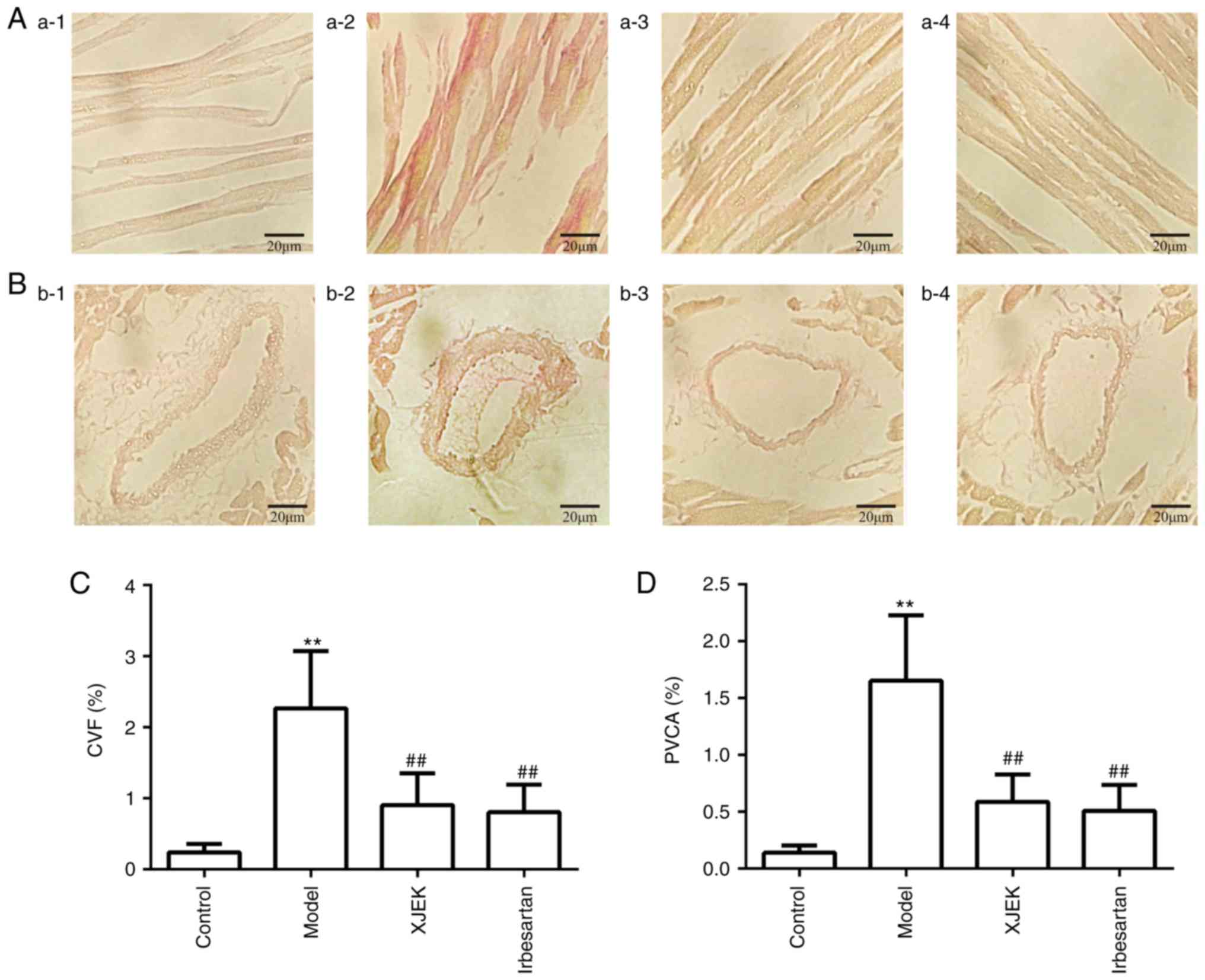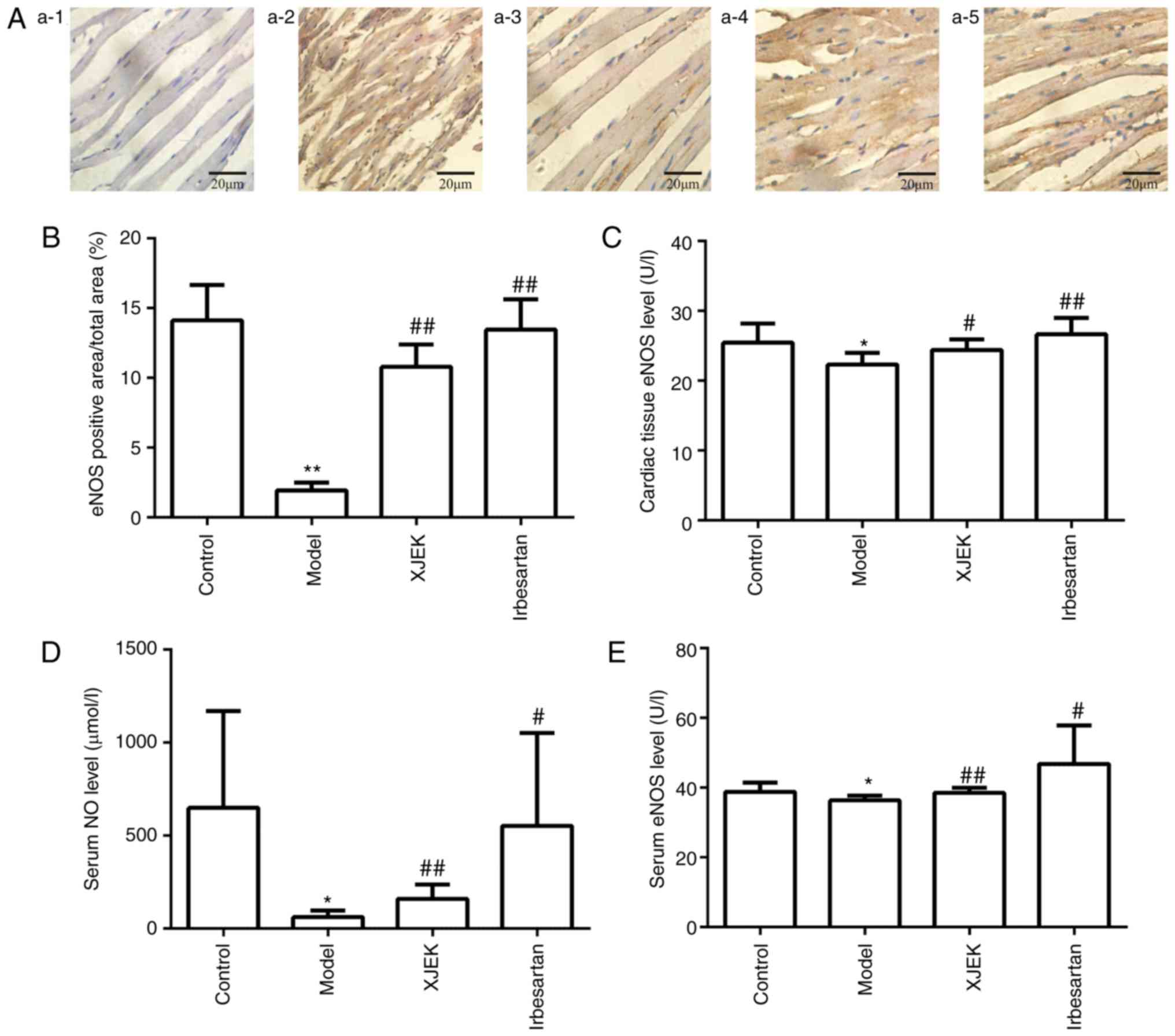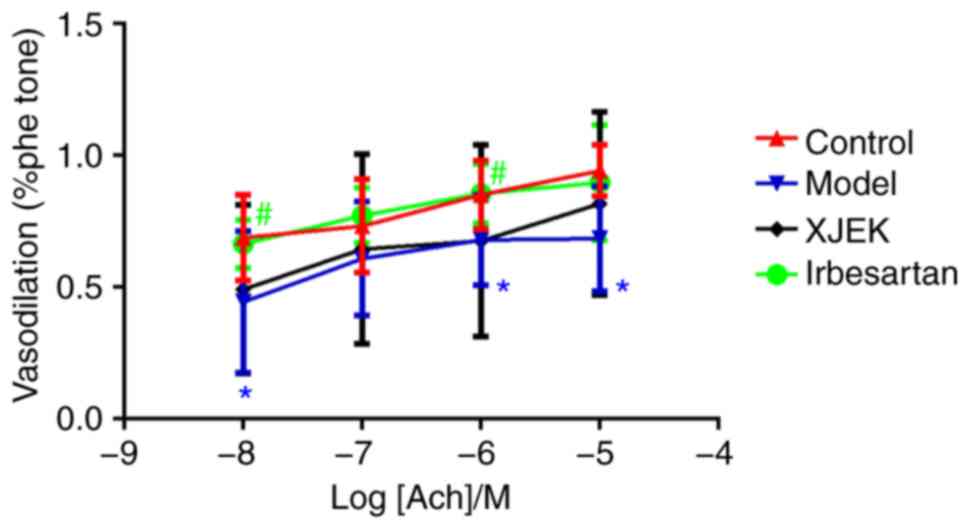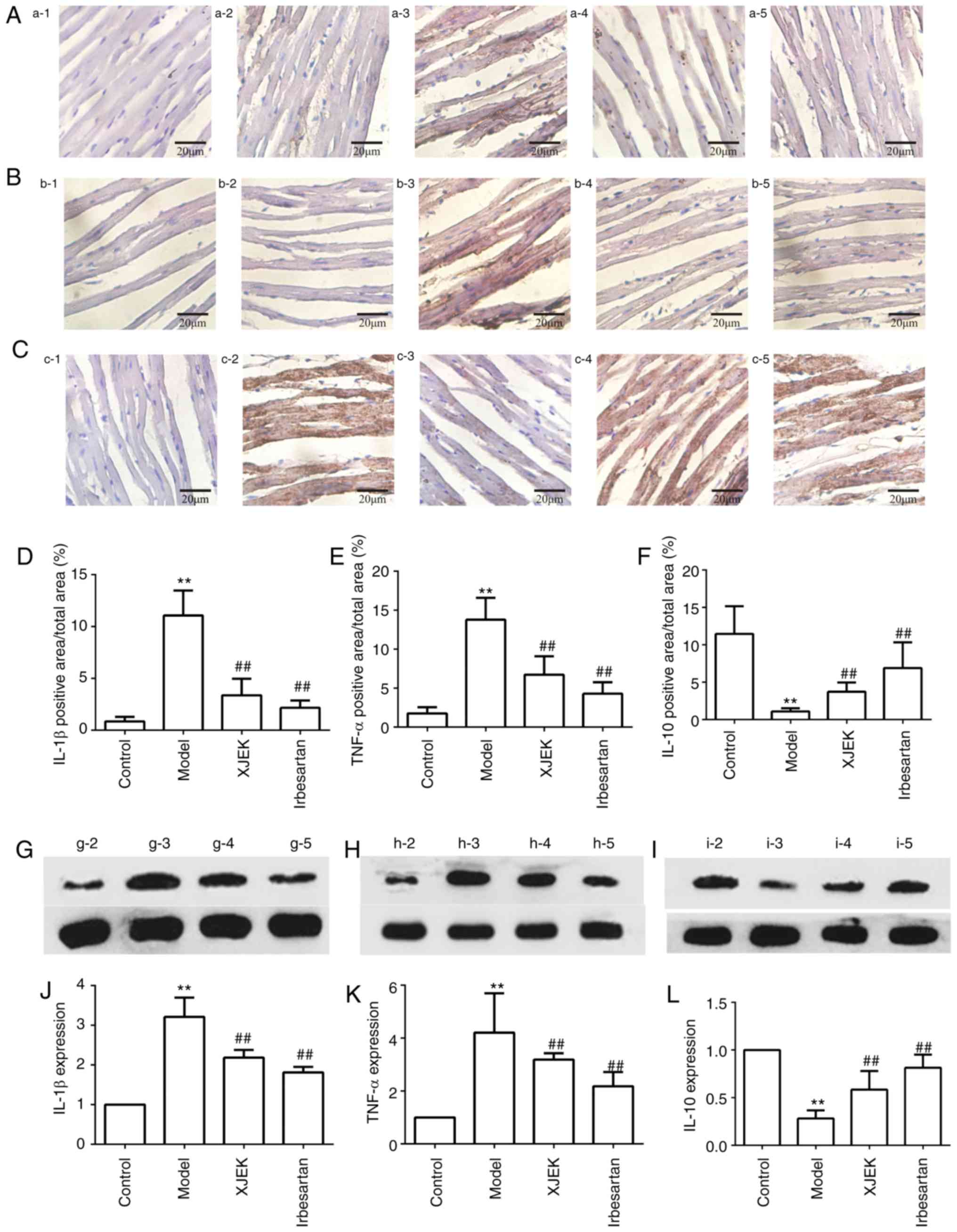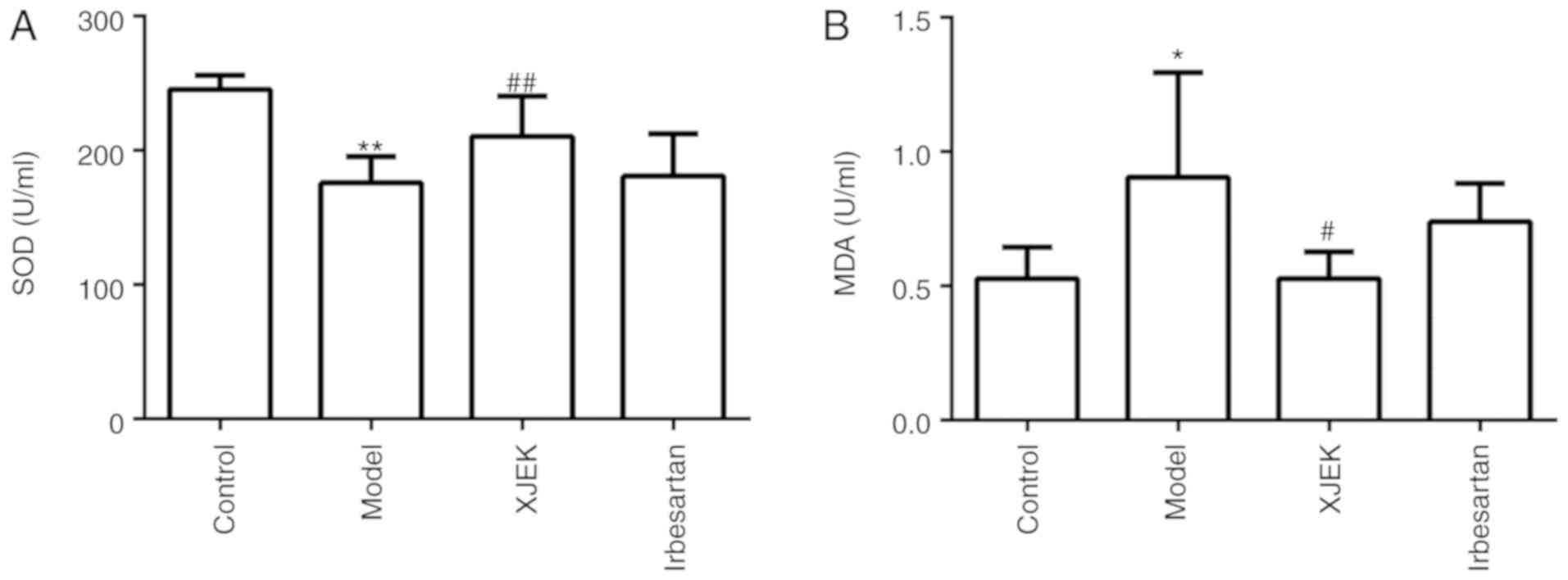|
1
|
Glover M, Zuber AM and O'Shaughnessy KM:
Hypertension, dietary salt intake, and the role of the
thiazide-sensitive sodium chloride transporter NCCT. Cardiovasc
Ther. 29:68–76. 2011. View Article : Google Scholar : PubMed/NCBI
|
|
2
|
Lloyd-Jones D, Adams R, Carnethon M, De
Simone G, Ferguson TB, Flegal K, Ford E, Furie K, Go A, Greenlund
K, et al: Heart disease and stroke statistics-2009 update: A report
from the American Heart Association Statistics Committee and Stroke
Statistics Subcommittee. Circulation. 119:480–486. 2009. View Article : Google Scholar : PubMed/NCBI
|
|
3
|
Asghar M, Tayebati SK, Lokhandwala MF and
Hussain T: Potential dopamine-1 receptor stimulation in
hypertension management. Curr Hypertens Rep. 13:294–302. 2011.
View Article : Google Scholar : PubMed/NCBI
|
|
4
|
Basson J, Simino J and Rao DC: Between
candidate genes and whole genomes: Time for alternative approaches
in blood pressure genetics. Curr Hypertens Rep. 14:46–61. 2012.
View Article : Google Scholar : PubMed/NCBI
|
|
5
|
Lev-Ran A and Porta M: Salt and
hypertension: A phylogenetic perspective. Diabetes Metab Res Rev.
21:118–131. 2005. View
Article : Google Scholar : PubMed/NCBI
|
|
6
|
Drenjančević-Perić I, Jelaković B, Lombard
JH, Kunert MP, Kibel A and Gros M: High-salt diet and hypertension:
Focus on the renin-angiotensin system. Kidney Blood Press Res.
34:1–11. 2011. View Article : Google Scholar : PubMed/NCBI
|
|
7
|
Oloyo AK, Sofola OA and Yakubu MA:
Orchidectomy attenuates high-salt diet-induced increases in blood
pressure, renovascular resistance, and hind limb vascular
dysfunction: Role of testosterone. Clin Exp Pharmacol Physiol.
43:825–833. 2016. View Article : Google Scholar : PubMed/NCBI
|
|
8
|
Guo K, Lan CZ, Yu TT, Huang LL, Wang XH,
Pan C and Gao S: Effects of Xin-Ji-Er-Kang formula on 2K1C-induced
hypertension and cardiovascular remodeling in rats. J
Ethnopharmacol. 155:1227–1235. 2014. View Article : Google Scholar : PubMed/NCBI
|
|
9
|
Boegehold MA, Drenjancevic I and Lombard
JH: Salt, Angiotensin II, superoxide, and endothelial function.
Compr Physiol. 6:215–254. 2015. View Article : Google Scholar : PubMed/NCBI
|
|
10
|
Roeleveld RJ, Vonk-Noordegraaf A, Marcus
JT, Bronzwaer JG, Marques KM, Postmus PE and Boonstra A: Effects of
epoprostenol on right ventricular hypertrophy and dilatation in
pulmonary hypertension. Chest. 125:572–579. 2004. View Article : Google Scholar : PubMed/NCBI
|
|
11
|
Zhu J, Drenjancevic-Peric I, McEwen S,
Friesema J, Schulta D, Yu M, Roman RJ and Lombard JH: Role of
superoxide and angiotensin II suppression in salt-induced changes
in endothelial Ca2+ signaling and NO production in rat aorta. Am J
Physiol Heart Circ Physiol. 291:H929–H938. 2006. View Article : Google Scholar : PubMed/NCBI
|
|
12
|
Zhu J, Mori T, Huang T and Lombard JH:
Effect of high-salt diet on NO release and superoxide production in
rat aorta. Am J Physiol Heart Circ Physiol. 286:H575–H583. 2004.
View Article : Google Scholar : PubMed/NCBI
|
|
13
|
Li L, Fink GD, Watts SW, Northcott CA,
Galligan JJ, Pagano PJ and Chen AF: Endothelin-1 increases vascular
superoxide via endothelin(A)-NADPH oxidase pathway in low-renin
hypertension. Circulation. 107:1053–1058. 2003. View Article : Google Scholar : PubMed/NCBI
|
|
14
|
Pagano PJ, Clark JK, Cifuentes-Pagano ME,
Clark SM, Callis GM and Quinn MT: Localization of a constitutively
active, phagocyte-like NADPH oxidase in rabbit aortic adventitia:
Enhancement by angiotensin II. Proc Natl Acad Sci USA.
94:14483–14488. 1997. View Article : Google Scholar : PubMed/NCBI
|
|
15
|
Rajagopalan S, Kurz S, Münzel T, Tarpey M,
Freeman BA, Griendling KK and Harrison DG: Angiotensin II-mediated
hypertension in the rat increases vascular superoxide production
via membrane NADH/NADPH oxidase activation. Contribution to
alterations of vasomotor tone. J Clin Invest. 97:1916–1923. 1996.
View Article : Google Scholar : PubMed/NCBI
|
|
16
|
De Batista PR, Palacios R, Martin A,
Hernanz R, Médici CT, Silva MA, Rossi EM, Aguado A, Vassallo DV,
Salaices M and Alonso MJ: Toll-like receptor 4 upregulation by
angiotensin II contributes to hypertension and vascular dysfunction
through reactive oxygen species production. PLoS One.
9:e1040202014. View Article : Google Scholar : PubMed/NCBI
|
|
17
|
Harrison DG, Marvar PJ and Titze JM:
Vascular inflammatory cells in hypertension. Front Physiol.
3:1282012. View Article : Google Scholar : PubMed/NCBI
|
|
18
|
Matsusaka T and Ichikawa I: Biological
functions of angiotensin and its receptors. Annu Rev Physiol.
59:395–412. 1997. View Article : Google Scholar : PubMed/NCBI
|
|
19
|
Cai H and Harrison DG: Endothelial
dysfunction in cardiovascular diseases: The role of oxidant stress.
Circ Res. 87:840–844. 2000. View Article : Google Scholar : PubMed/NCBI
|
|
20
|
Mehta PK and Griendling KK: Angiotensin II
cell signaling: Physiological and pathological effects in the
cardiovascular system. Am J Physiol Cell Physiol. 292:C82–C97.
2007. View Article : Google Scholar : PubMed/NCBI
|
|
21
|
Chen LW, Qin KM, Zhu YH, Cai H, Li WD and
Cai BC: Research status and prospect of primary processing of
traditional Chinese medicinal materials. Zhongguo Zhong Yao Za Zhi.
40:602–606. 2015.(In Chinese). PubMed/NCBI
|
|
22
|
Wang QM, Chen GL, Wang YJ, Wang HS, Gao MH
and Gong YZ: An experimental study on inhibitory effect of
xinjierkang granules on virus myocarditis. Zhongguo Zhong Yao Za
Zhi. 25:293–296. 2000.(In Chinese). PubMed/NCBI
|
|
23
|
U.S Department of Health Education &
Welfare. Guide for the care and use of laboratory animals (revised
edition). 1978.
|
|
24
|
Preuss HG, Knapka JJ, MacArthy P, Yousufi
AK, Sabnis SG and Antonovych TT: High sucrose diets increase blood
pressure of both salt-sensitive and salt-resistant rats. Am J
Hypertens. 5:585–591. 1992. View Article : Google Scholar : PubMed/NCBI
|
|
25
|
Yu TT, Guo K, Chen HC, Lan CZ, Wang J,
Huang LL, Wang XH, Zhang Z and Gao S: Effects of traditional
Chinese medicine Xin-Ji-Er-Kang formula on 2K1C hypertensive rats:
Role of oxidative stress and endothelial dysfunction. BMC
Complement Altern Med. 13:1732013. View Article : Google Scholar : PubMed/NCBI
|
|
26
|
Veltkamp R, Rajapakse N, Robins G, Puskar
M, Shimizu K and Busija D: Transient focal ischemia increases
endothelial nitric oxide synthase in cerebral blood vessels.
Stroke. 33:2704–2710. 2002. View Article : Google Scholar : PubMed/NCBI
|
|
27
|
Ma S, Wang Q, Zhang Y, Yang D, Li D, Tang
B and Yang Y: Transgenic overexpression of uncoupling protein 2
attenuates salt-induced vascular dysfunction by inhibition of
oxidative stress. Am J Hypertens. 27:345–354. 2014. View Article : Google Scholar : PubMed/NCBI
|
|
28
|
Channon KM: Tetrahydrobiopterin: A
vascular redox target to improve endothelial function. Curr Vasc
Pharmacol. 10:705–708. 2012. View Article : Google Scholar : PubMed/NCBI
|
|
29
|
Gu JW, Bailey AP, Tan W, Shparago M and
Young E: Long-term high salt diet causes hypertension and decreases
renal expression of vascular endothelial growth factor in
sprague-dawley rats. J Am Soc Hypertens. 2:275–285. 2008.
View Article : Google Scholar : PubMed/NCBI
|
|
30
|
Jian W, Enze C and Lizhi L: Xin Ji Er Kang
in Coronary Heart Disease. J NanJing Univ Trad Chin Med.
14:201–212. 1998.(in Chinese).
|
|
31
|
Gao S, Wang XH, Huang LL, Yu TT, Du SM,
Guo YW, Jia Y and Wang J: Effects of a compound Chinese medicine
Xinji' erkang on isoproterenol-induced ventricular remodeling in
mice. Zhong Xi Yi Jie He Xue Bao. 10:330–336. 2012.(In Chinese).
View Article : Google Scholar : PubMed/NCBI
|
|
32
|
Hu J, Zhang YX, Wang L, Ding L, Huang GY,
Cai GW and Gao S: Protective effects of Xinji'erkang on myocardial
infarction induced cardiac injury in mice. BMC Complement Altern
Med. 17:3382017. View Article : Google Scholar : PubMed/NCBI
|
|
33
|
Kazmi RS, Boyce S and Lwaleed BA:
Homeostasis of hemostasis: The role of endothelium. Semin Thromb
Hemost. 41:549–555. 2015. View Article : Google Scholar : PubMed/NCBI
|
|
34
|
Bunbupha S, Pakdeechote P, Kukongviriyapan
U, Prachaney P and Kukongviriyapan V: Asiatic acid reduces blood
pressure by enhancing nitric oxide bioavailability with modulation
of eNOS and p47phox expression in L-NAME-induced hypertensive rats.
Phytother Res. 28:1506–1512. 2014. View Article : Google Scholar : PubMed/NCBI
|
|
35
|
Fu JY, Qian LB, Zhu LG, Liang HT, Tan YN,
Lu HT, Lu JF, Wang HP and Xia Q: Betulinic acid ameliorates
endothelium-dependent relaxation in L-NAME-induced hypertensive
rats by reducing oxidative stress. Eur J Pharm Sci. 44:385–391.
2011. View Article : Google Scholar : PubMed/NCBI
|
|
36
|
Zatz R and Baylis C: Chronic nitric oxide
inhibition model six years on. Hypertension. 32:958–964. 1998.
View Article : Google Scholar : PubMed/NCBI
|
|
37
|
Shao Y, Cheng Z, Li X, Chernaya V, Wang H
and Yang XF: Immunosuppressive/anti-inflammatory cytokines directly
and indirectly inhibit endothelial dysfunction-a novel mechanism
for maintaining vascular function. J Hematol Oncol. 7:802014.
View Article : Google Scholar : PubMed/NCBI
|
|
38
|
Amiri F, Ko EA, Javeshghani D, Reudelhuber
TL and Schiffrin EL: Deleterious combined effects of salt-loading
and endothelial cell restricted endothelin-1 overexpression on
blood pressure and vascular function in mice. J Hypertens.
28:1243–1251. 2010.PubMed/NCBI
|
|
39
|
O'Donnell M, Mente A, Rangarajan S,
McQueen MJ, Wang X, Liu L, Yan H, Lee SF, Mony P, Devanath A, et
al: Urinary sodium and potassium excretion, mortality, and
cardiovascular events. N Engl J Med. 371:612–623. 2014. View Article : Google Scholar : PubMed/NCBI
|
|
40
|
Lagerqvist EL, Finnin BA, Pouton CW and
Haynes JM: Endothelin-1 and angiotensin II modulate rate and
contraction amplitude in a subpopulation of mouse embryonic stem
cell-derived cardiomyocyte-containing bodies. Stem Cell Res.
6:23–33. 2011. View Article : Google Scholar : PubMed/NCBI
|
|
41
|
Tsai IJ, Croft KD, Puddey IB, Beilin LJ
and Barden A: 20-Hydroxyeicosatetraenoic acid synthesis is
increased in human neutrophils and platelets by angiotensin II and
endothelin-1. Am J Physiol Heart Circ Physiol. 300:H1194–H1200.
2011. View Article : Google Scholar : PubMed/NCBI
|
|
42
|
Nurkiewicz TR, Wu G, Li P and Boegehold
MA: Decreased arteriolar tetrahydrobiopterin is linked to
superoxide generation from nitric oxide synthase in mice fed high
salt. Microcirculation. 17:147–157. 2010. View Article : Google Scholar : PubMed/NCBI
|
|
43
|
Channon KM: Tetrahydrobiopterin: Regulator
of endothelial nitric oxide synthase in vascular disease. Trends
Cardiovasc Med. 14:323–327. 2004. View Article : Google Scholar : PubMed/NCBI
|
|
44
|
Campbell DJ: Do intravenous and
subcutaneous angiotensin II increase blood pressure by different
mechanisms? Clin Exp Pharmacol Physiol. 40:560–570. 2013.
View Article : Google Scholar : PubMed/NCBI
|
|
45
|
Androulakis ES, Tousoulis D, Papageorgiou
N, Tsioufis C, Kallikazaros I and Stefanadis C: Essential
hypertension: Is there a role for inflammatory mechanisms? Cardiol
Rev. 17:216–221. 2009. View Article : Google Scholar : PubMed/NCBI
|
|
46
|
Sprague AH and Khalil RA: Inflammatory
cytokines in vascular dysfunction and vascular disease. Biochem
Pharmacol. 78:539–552. 2009. View Article : Google Scholar : PubMed/NCBI
|
|
47
|
Alonso J, Sánchez de Miguel L, Montón M,
Casado S and López-Farré A: Endothelial cytosolic proteins bind to
the 3′ untranslated region of endothelial nitric oxide synthase
mRNA: Regulation by tumor necrosis factor alpha. Mol Cell Biol.
17:5719–5726. 1997. View Article : Google Scholar : PubMed/NCBI
|
|
48
|
Neumann P, Gertzberg N and Johnson A:
TNF-alpha induces a decrease in eNOS promoter activity. Am J
Physiol Lung Cell Mol Physiol. 286:L452–L459. 2004. View Article : Google Scholar : PubMed/NCBI
|
|
49
|
Ren B and She Q: Study on the association
between IL-1β, IL-8 and IL-10 gene polymorphisms and risk of
coronary artery disease. Int J Clin Exp Med. 8:7937–7943.
2015.PubMed/NCBI
|
|
50
|
Kasal DA, Barhoumi T, Li MW, Yamamoto N,
Zdanovich E, Rehman A, Neves MF, Laurant P, Paradis P and Schiffrin
EL: T regulatory lymphocytes prevent aldosterone-induced vascular
injury. Hypertension. 59:324–330. 2012. View Article : Google Scholar : PubMed/NCBI
|
|
51
|
Schiffrin EL: Peroxisome
proliferator-activated receptors and cardiovascular remodeling. Am
J Physiol Heart Circ Physiol. 288:H1037–H1043. 2005. View Article : Google Scholar : PubMed/NCBI
|















